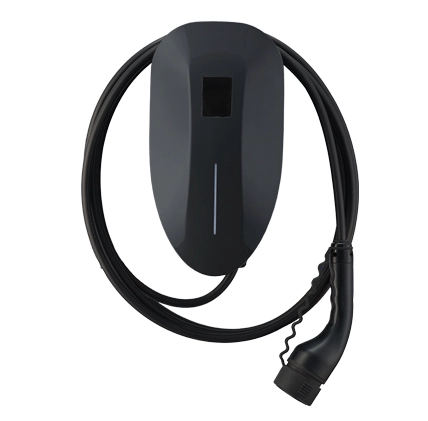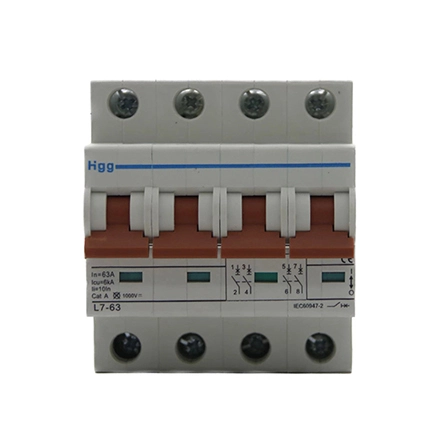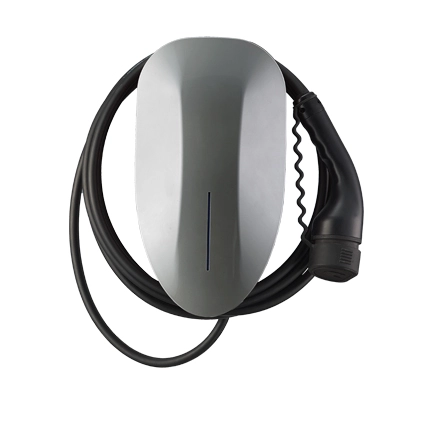Introduction for Contactor
The world of industrial machinery is vast and complex, with contactor being one of its cornerstone elements. But what exactly is contactor? How does it operate, and where is it most effectively utilized? Furthermore, what are the primary components that make it tick? This piece aims to answer all these questions and more, providing a comprehensive overview of contactor. After reading this passage, you will learn more and build up your own pyramid about contactor.
Basic Knowledge About Contactor
Definition of a Contactor
A contactor is an electrically-controlled switch used for switching an electrical power circuit. It is designed to handle high power loads and is typically used in commercial and industrial applications.
Difference Between a Contactor and Other Electrical Switches
While both contactors and relays are types of electrically operated switches, they differ in their applications and capacities:
Contactor: Primarily used to control high power loads, often in the range of several kilowatts to megawatts. They are robust and designed to handle frequent switching operations, especially in motor control centers.
Relay: Generally used for lower power applications and often acts as an intermediary, signaling a contactor or another device to perform an action. They are more about control than power transmission.
Importance of Contactors
Contactors play a pivotal role in electrical systems for several reasons:
Safety: They provide a means to safely disconnect power, protecting both equipment and operators.
Control: Contactors allow for remote control of equipment, enabling automation and centralized control in large facilities.
Flexibility: With multiple contact points, they can control several circuits simultaneously.
Applications in Modern Industry
Contactors are ubiquitous in modern industries and are found in:
Motor Control Centers (MCC): For starting/stopping large motors.
HVAC Systems: To control compressors and large fans.
Lighting Control: For large commercial and industrial lighting systems.
EV Charging Stations: Critical for managing the high power demands of electric vehicle charging.
In these applications, contactors enhance efficiency by allowing for precise control and automation. They also bolster safety by providing reliable disconnection and protection mechanisms.
Introduction And Function of Contactor's Components
After having a brief understanding toward contactor about what they are? Why they important and Where we need them? Now let’s dive deeper to see their components and how they work to deliver the electricity. In the meantime, I will use contactor in EV charger as an example to demonstrate how they work.
1. Main Contacts
Definition: Main contacts are the primary conducting points in a contactor that allow or interrupt the flow of electrical current.
Function: Their primary role is to establish or break the electrical connection, enabling or disabling the flow of current to the connected device.
Structure: Typically made of durable and conductive materials like copper or silver alloys, they are designed to handle high currents without deteriorating.
Working Principle: When the contactor is activated, the main contacts come together, allowing current to flow. Conversely, when deactivated, they separate, breaking the circuit.
Example: In an EV charger, such as portable ac ev charger, the main contacts ensure that the charger delivers power to the vehicle when plugged in and stops when unplugged or when charging is complete.
2. Auxiliary Contacts
Definition: Auxiliary contacts are secondary contacts that don't directly control the main power circuit but provide additional functionalities.
Function: They are used for control and signaling purposes, often in conjunction with the main contacts.
Application: Commonly used for feedback, interlocking, or to control other auxiliary devices.
Example: In our EV charger, auxiliary contacts might signal when the battery is fully charged, triggering an indicator light or an alert.
3. Magnetic Coil
Definition: A magnetic coil, often referred to as the coil, is a winding of wire that generates a magnetic field when electricity flows through it.
Function: In a contactor, its primary role is to actuate the main and auxiliary contacts by creating a magnetic field.
Working Principle: When current passes through the coil, it produces a magnetic field that either attracts or repels a metal armature, moving the contacts.
Example: In the EV charger, when you initiate the charging process, the coil activates, closing the main contacts and starting the charging cycle.
4. Spring Mechanism
Definition: This is a mechanical component that ensures the contacts return to their original position after being actuated.
Function: It provides the necessary force to open the contacts when the magnetic coil is not energized.
Structure: Designed with tension or compression springs that exert force against the moving parts of the contactor.
Example: If there's a sudden power outage while charging an EV, the spring mechanism ensures the main contacts open, safely interrupting the charging process.
5. Other Protective Devices
Definition: These are components or systems designed to safeguard the contactor and associated equipment from potential harm.
Function: They protect against overloads, short circuits, voltage spikes, and other electrical anomalies.
Types: Common protective devices include fuses, circuit breakers, and surge protectors.
Working Principle: When an abnormal condition is detected, these devices interrupt the current flow, preventing potential damage.
Example: If an EV charger experiences a surge in electricity, a protective device would cut off the power, ensuring both the charger and the vehicle remain undamaged.
By understanding each component of a contactor, I think now you must have a clear picture about contactor and how they work to control the flow of electricity.
Working principles and application
After Knowing the components of contactor, let’s learn some juicy principles, which is harder and more essential for you to be an expert. In the mean time, I will expand some this topic and guide you to the application of contactors.
1. Basic Working Principle
How does a contactor work?
Think of a contactor as a tap controlling the flow of water. In the electrical world, the copper contactor controls the flow of electricity, much like how a tap controls water flow.
How does it control the current?
Just as a tap uses a valve to regulate water flow, a contactor uses its contacts to regulate the flow of electricity. When the contacts are closed, electricity flows; when they're open, the flow stops.
2. Fundamental Concept Explanation
What is electromagnetic attraction?
Imagine a powerful magnet pulling metal objects towards it. In the electrical realm, when electricity (our water) flows through a coil, it creates a magnetic field that can attract other metal components.
Why do contactors need electromagnetic attraction to work?
The magnetic field created by the coil in the contactor pulls the contacts together, allowing electricity to flow. It's like using a magnet to pull the tap's valve open or closed.
3. The Specific Process of Electromagnetic Attraction
How is a magnetic field produced when current flows through a coil?
When water flows through a pipe, it can turn a water wheel. Similarly, when electricity flows through a coil, it generates a magnetic field around it.
How does this magnetic field attract the main contacts of the contactor?
The magnetic field acts like a magnet pulling on a metal object. The stronger the current (water flow), the stronger the magnetic pull on the contactor's contacts.
4. Opening and Closing of Contactors
How does a contactor ensure quick and reliable opening and closing?
Modern contactors are designed with precision engineering to ensure the contacts meet and separate swiftly, just like a high-quality tap that doesn't drip or get stuck.
Under what circumstances will a contactor automatically open or close?
Contactors can be designed to respond to various conditions, much like a tap that turns off when a tank is full. For instance, they might open during a power surge to protect equipment.
5. Safety Considerations
What happens if a contactor malfunctions?
If a tap breaks, water might spill everywhere. Similarly, a malfunctioning contactor could allow uncontrolled electricity flow, potentially damaging equipment or causing safety hazards.
How to ensure the safe operation of contactors under high current or voltage?
Just as we have overflow systems for water tanks, contactors are equipped with safety features and are rated for specific voltage and current levels to prevent accidents.
6. Real-world Applications of Contactors
1. Industrial Motors and Machinery:
Usage: In large factories, contactors are extensively used to control the operation of heavy-duty motors and machinery.
How it works: When a machine needs to start, the contactor closes its contacts, allowing electricity to flow and power the motor. When the operation is complete, the contactor opens, cutting off the power and safely stopping the machine.
2. Air Conditioning (HVAC) Systems:
Usage: Contactors are integral components in HVAC systems, controlling the compressor and fans.
How it works: The thermostat sends a signal to the contactor when cooling or heating is required. The contactor then closes, powering the compressor or fans. Once the desired temperature is reached, the contactor opens, shutting off the system.
3. Elevator Control:
Usage: Elevators rely on contactors to manage their motor operations.
How it works: When a floor button is pressed, the elevator's control system activates the contactor, which in turn powers the motor to move the elevator to the desired floor. Once there, the contactor disconnects the power, stopping the elevator.
4. Lighting Systems in Large Facilities:
Usage: In stadiums, concert halls, or large commercial buildings, contactors control the extensive lighting systems.
How it works: Instead of manually turning on/off hundreds of lights, a central control system uses contactors to manage large groups of lights simultaneously, ensuring efficient and timely control.
5. Backup Generators:
Usage: Contactors are used in backup power systems to switch between the main power supply and the generator.
How it works: In the event of a power outage, the contactor detects the loss of main power and activates the generator, ensuring continuous power supply. Once the main power is restored, the contactor switches back.
6. Electric Vehicle Charging Stations:
Usage: As the demand for electric vehicles (EVs) grows, so does the need for EV charging stations, which utilize contactors.
How it works: When an EV is plugged in, the charging station's contactor closes, allowing electricity to flow and charge the vehicle's battery. Once the battery is fully charged or the vehicle is unplugged, the contactor opens, stopping the flow of electricity.
Introduction to Contactor Types
Now, if you’re a businessman or an apprentice in electricity, this section will help you grasp 6 types of contactors and their applications, as well as their working principle.
1. Types of Contactors
Common Types: The primary types of contactors include AC, DC, Vacuum, Solid-state, Thermal protection, and Magnetic contactors.
Applications & Advantages: Each type has its unique applications and advantages, much like different faucets serve specific purposes, from garden hoses to kitchen sinks.
2. AC Contactor (Alternating Current Contactor)
How it Works: AC contactors work by using an electromagnetic coil to open or close the circuit when electricity is applied. Think of it as a faucet that turns on/off when sensing water pressure.
Difference from DC Contactor: While both control the flow, AC contactors are designed for alternating current, whereas DC contactors are for direct current. It's like comparing a faucet for hot water to one for cold water.
Common Applications: AC contactors are widely used in home appliances, air conditioning systems, and industrial motors.
3. DC Contactor (Direct Current Contactor)
Suitability for DC Circuits: DC contactors are designed to handle the continuous flow of electricity, similar to a faucet that's meant for a steady stream of water.
Role in EV Charging: In electric vehicle charging, DC contactors ensure the safe and efficient flow of power from the charger to the vehicle, much like ensuring water reaches a garden without any leaks.
4. Vacuum Contactor
Reason for Vacuum Operation: Operating in a vacuum reduces arcing when the contacts open or close. Imagine a faucet that prevents any water splashes when turned off.
Advantages: Vacuum contactors are quieter, have a longer lifespan, and are more efficient than their counterparts, akin to a high-end faucet that offers a smooth water flow.
5. Solid-State Contactor
How it Works Without Mechanical Parts: Instead of physical contacts, solid-state contactors use semiconductor devices to control the flow of electricity. It's like having a touch-sensitive faucet that doesn't need to be turned manually.
Lifespan & Reliability: With no moving parts, they have a longer lifespan and are highly reliable, much like a top-quality faucet that rarely leaks.
6. Thermal Protection Contactor
Detection of Overheating: These contactors have a built-in sensor that detects excessive current, which can lead to overheating. It's like a faucet with a temperature sensor that warns you when the water is too hot.
Triggering Situations: They are activated when there's a risk of equipment damage due to overheating, ensuring safety, similar to a faucet that automatically shuts off to prevent scalding.
Future of Contactor
Coming to the end, let’s strength the importance of contactor one more time, and give a summary to the points we mentioned previously.
The Role of Contactors
Reliable Control of Electrical Circuits: Contactors provide a reliable and efficient solution for controlling electrical circuits, handling high currents and voltages. This makes them suitable for applications involving motors, lighting, HVAC systems, and power distribution.
Protection and Safety: One key problem that contactors solve is the control of high-power loads. They protect the control circuitry and other devices in the system. Additionally, they prevent overload conditions and short circuits, ensuring the safety of both the electrical circuit and connected equipment.
Diverse Applications: In essential sectors like industrial automation, manufacturing, and energy management, contactors are pivotal. They are used in motor control systems, lighting control, building management systems, power distribution panels, and green energy solutions.
Market Potential and Customer Demand
Growing Global Demand: Manufacturers and distributors focus on contactors due to the significant market potential and customer demand. The global market for contactors is expanding, driven by industrialization, infrastructure development, and automation.
Customer Requirements: Electrical contractors, engineers, and equipment manufacturers have specific needs. They seek reliable, high-performance contactors that can endure challenging environments. Manufacturers and distributors must address these demands with a diverse range of options and technical expertise.
Future Trends in the Contactor Industry
Technological Advancements: New technologies are enhancing the performance and efficiency of contactors. Digital control and communication capabilities in contactors allow advanced monitoring, diagnostics, and predictive maintenance.
Emerging Applications: Market growth drivers include the use of contactors in electric vehicles, renewable energy generation, and smart grid systems.
IoT and Industry 4.0: The Internet of Things (IoT) and Industry 4.0 are driving the need for intelligent and connected contactors. These contactors enable remote monitoring, control, and predictive maintenance, leading to improved efficiency and reduced downtime.
Summary
In this comprehensive guide, we delved deep into the world of contactors, aiming to provide readers with a holistic understanding of this essential industrial component.
The guide began with an introduction to contactors, explaining their significance in the realm of industrial machinery. We then explored the basic knowledge about contactors, including their definition, differences from other switches, importance, and applications in modern industries.
The guide further broke down the intricate components of a contactor, detailing their functions and how they collectively ensure the efficient operation of a contactor. Using the example of an EV charger, we illustrated the workings of these components in real-world scenarios.
Subsequently, we introduced various types of contactors, from AC and DC to vacuum and solid-state, explaining their unique features and applications. The guide concluded by highlighting the future trends in the contactor industry, emphasizing the role of technological advancements and emerging applications.
After reading this guide, you should be equipped with a thorough understanding of contactors, their components, types, applications, and future prospects.
Questions for Review:
1. What is the primary function of a contactor in industrial machinery?
2. How does a contactor differ from a relay?
3. Name at least three applications of contactors in modern industries.
4. What is the role of the main contacts in a contactor?
5. How does a magnetic coil contribute to the operation of a contactor?
6. Describe the difference between an AC contactor and a DC contactor.
7. Why are vacuum contactors considered efficient and quiet in operation?
8. How do solid-state contactors differ from traditional contactors in terms of components?
9. What advancements are driving the future of the contactor industry?
10. How do IoT and Industry 4.0 impact the demand and functionality of modern contactors?
Last but not least, if you have any other question for Contactor, please feel free to contact ye@voltageace.com.





